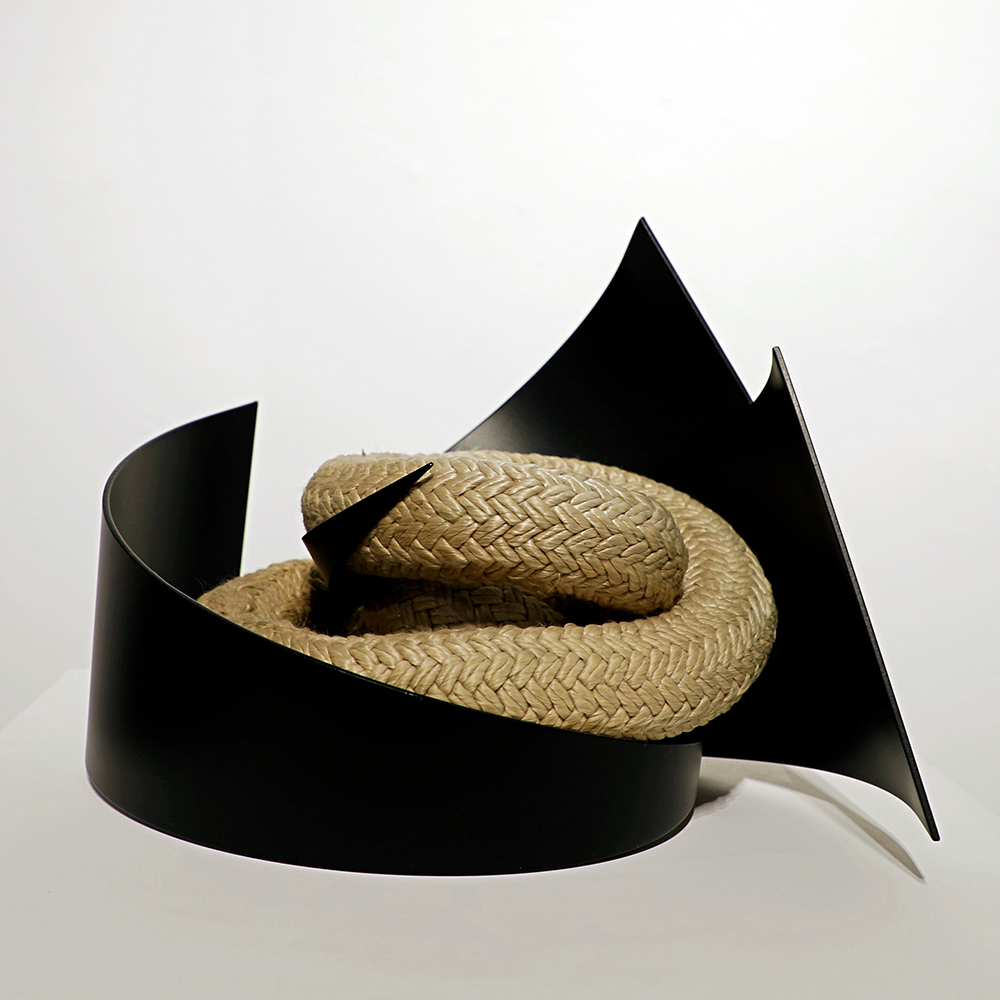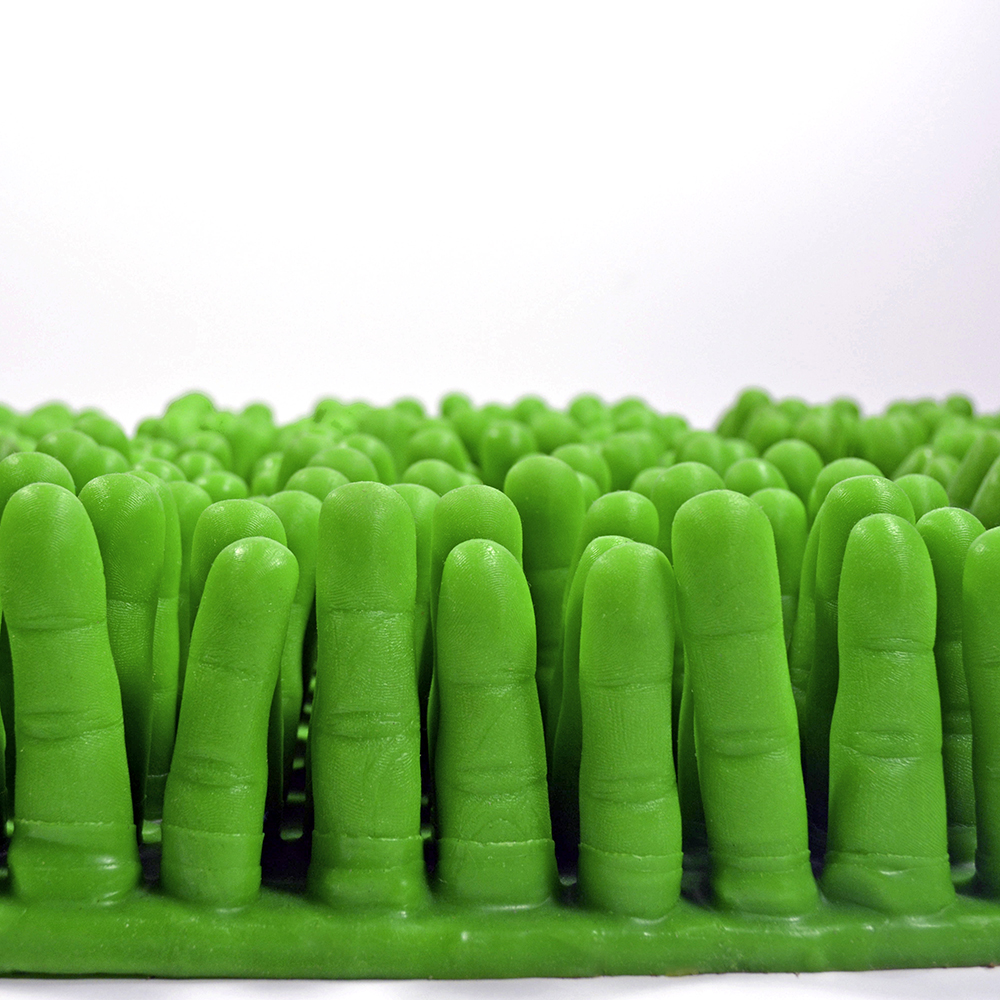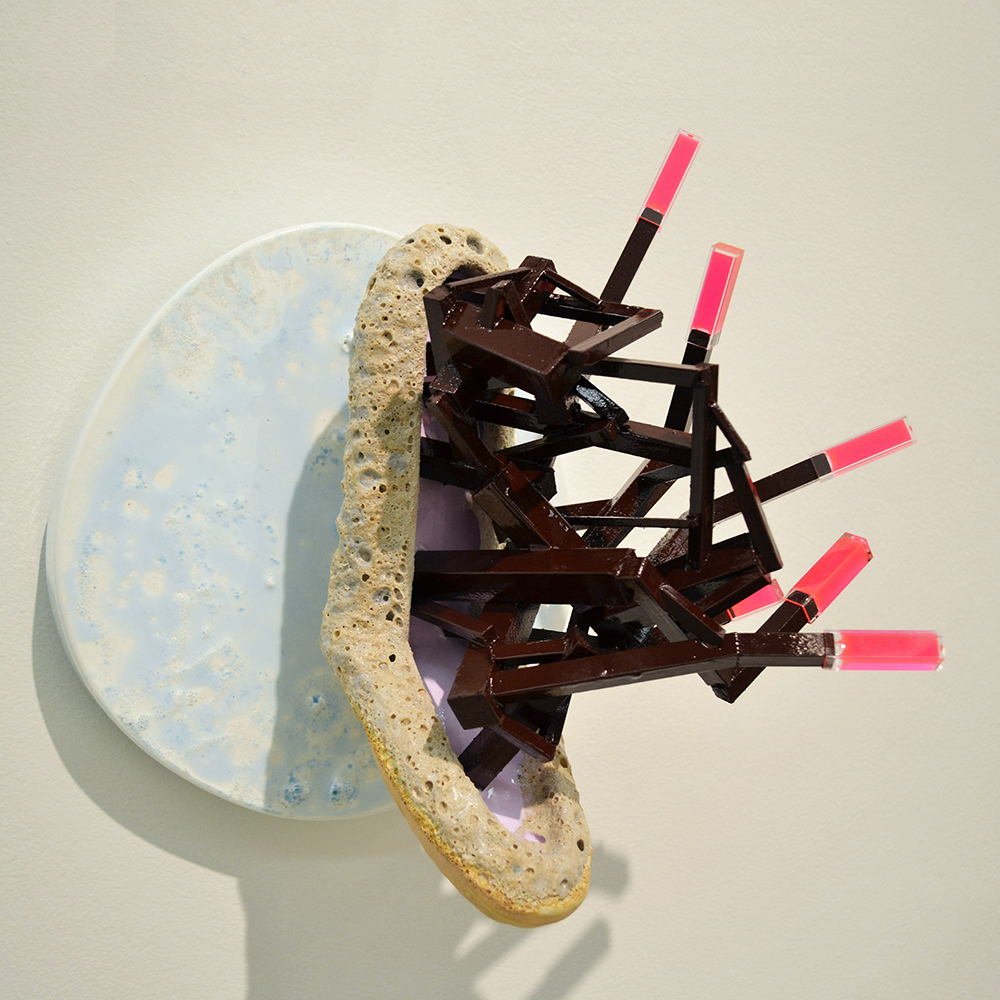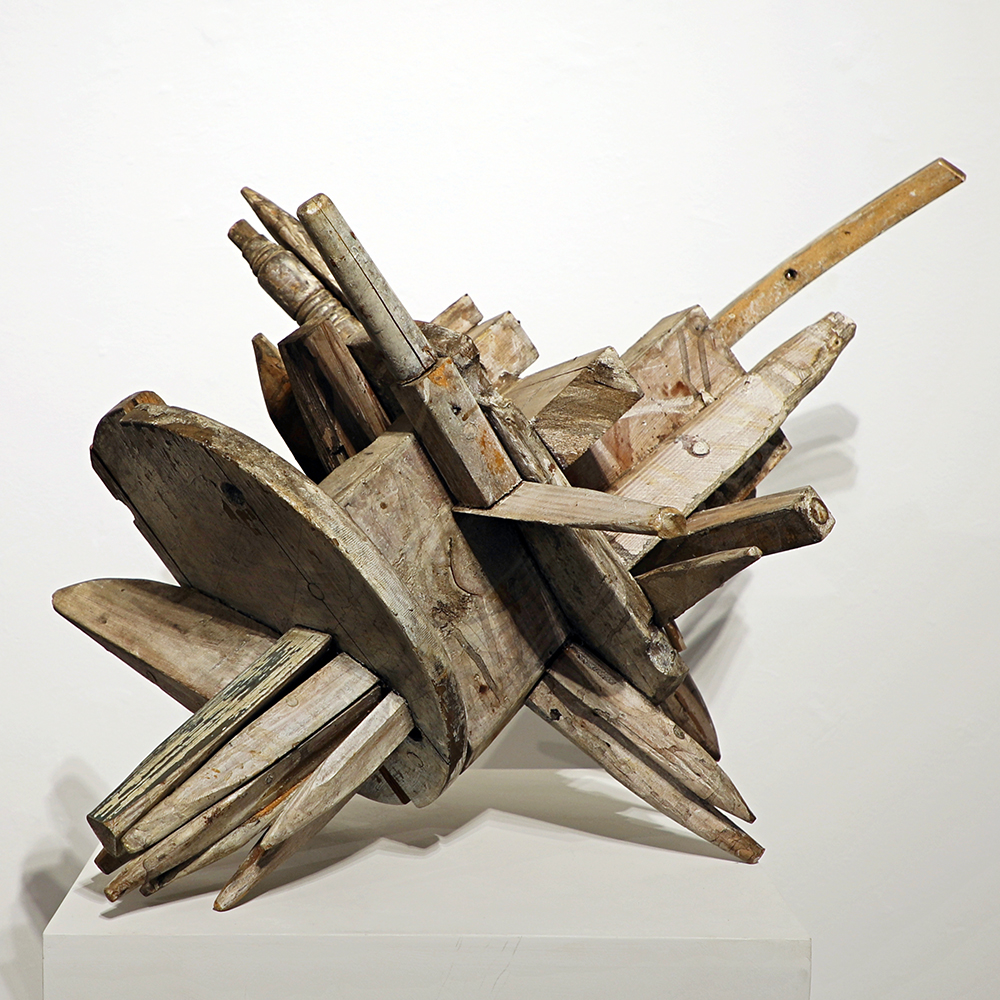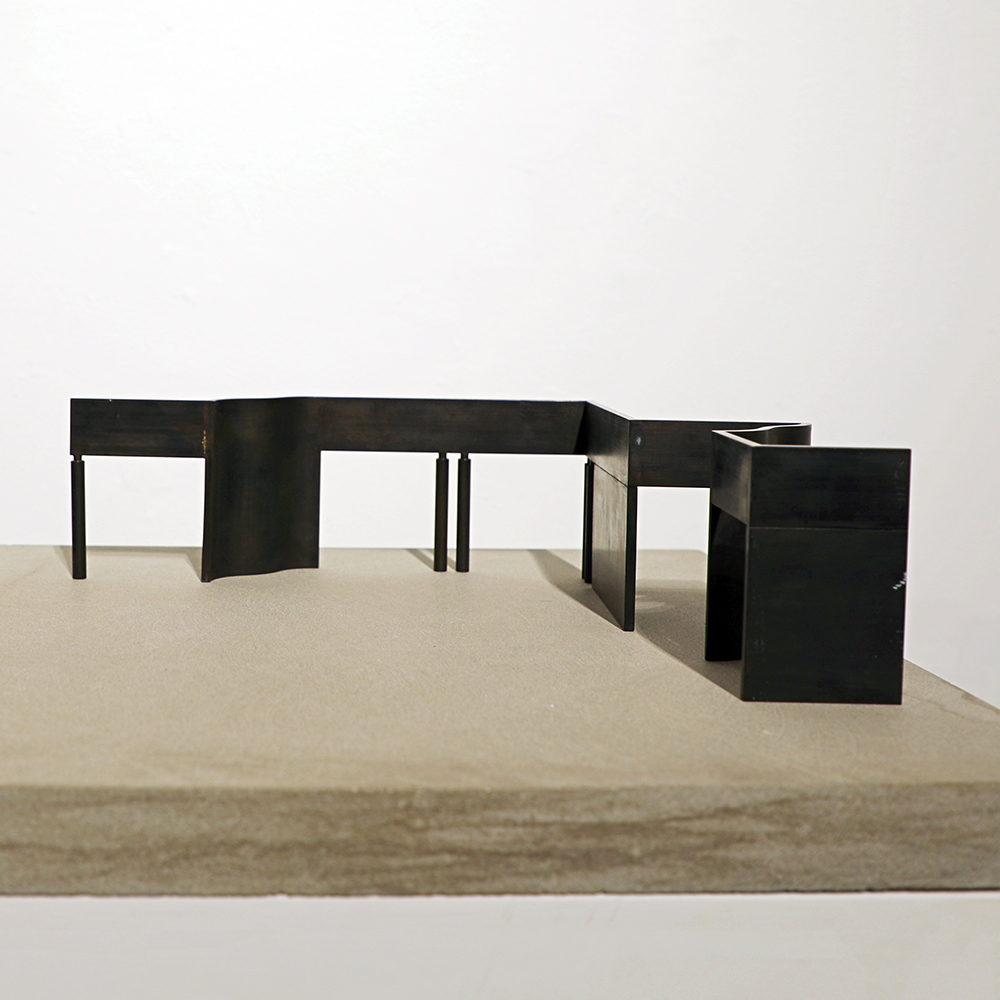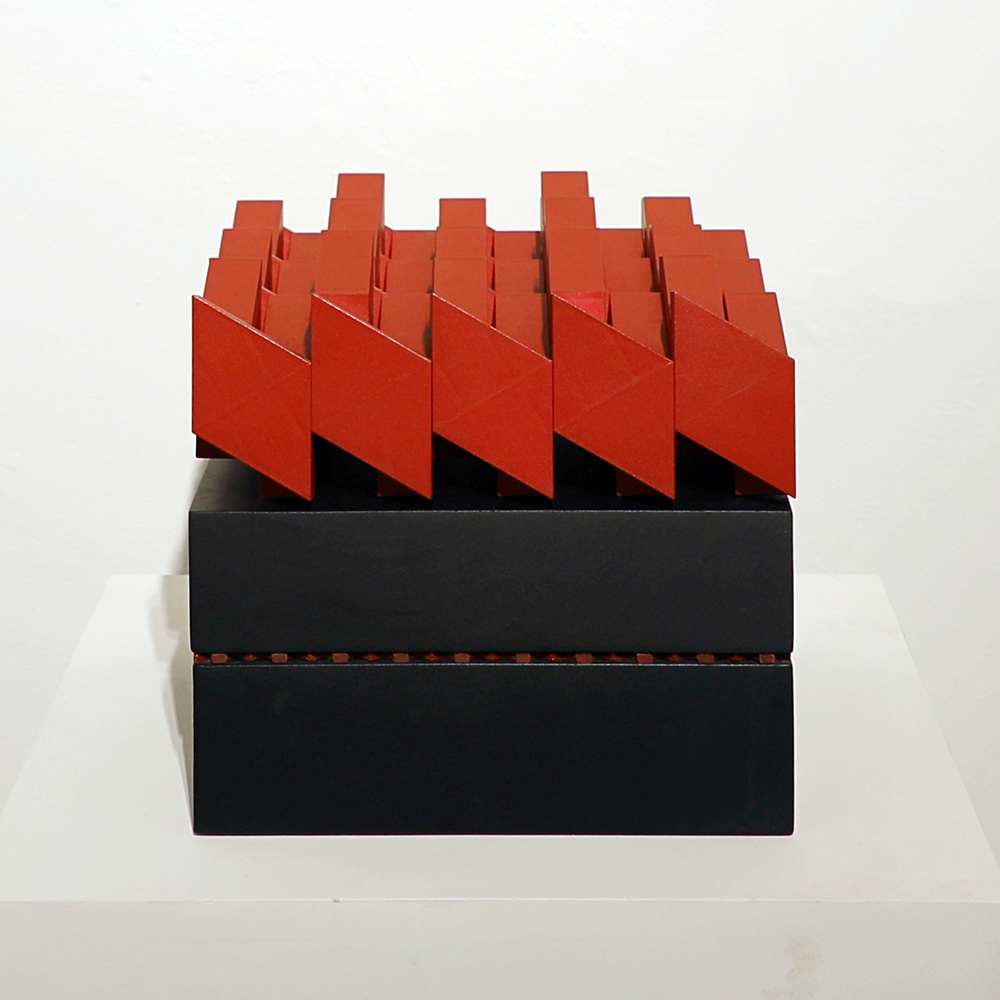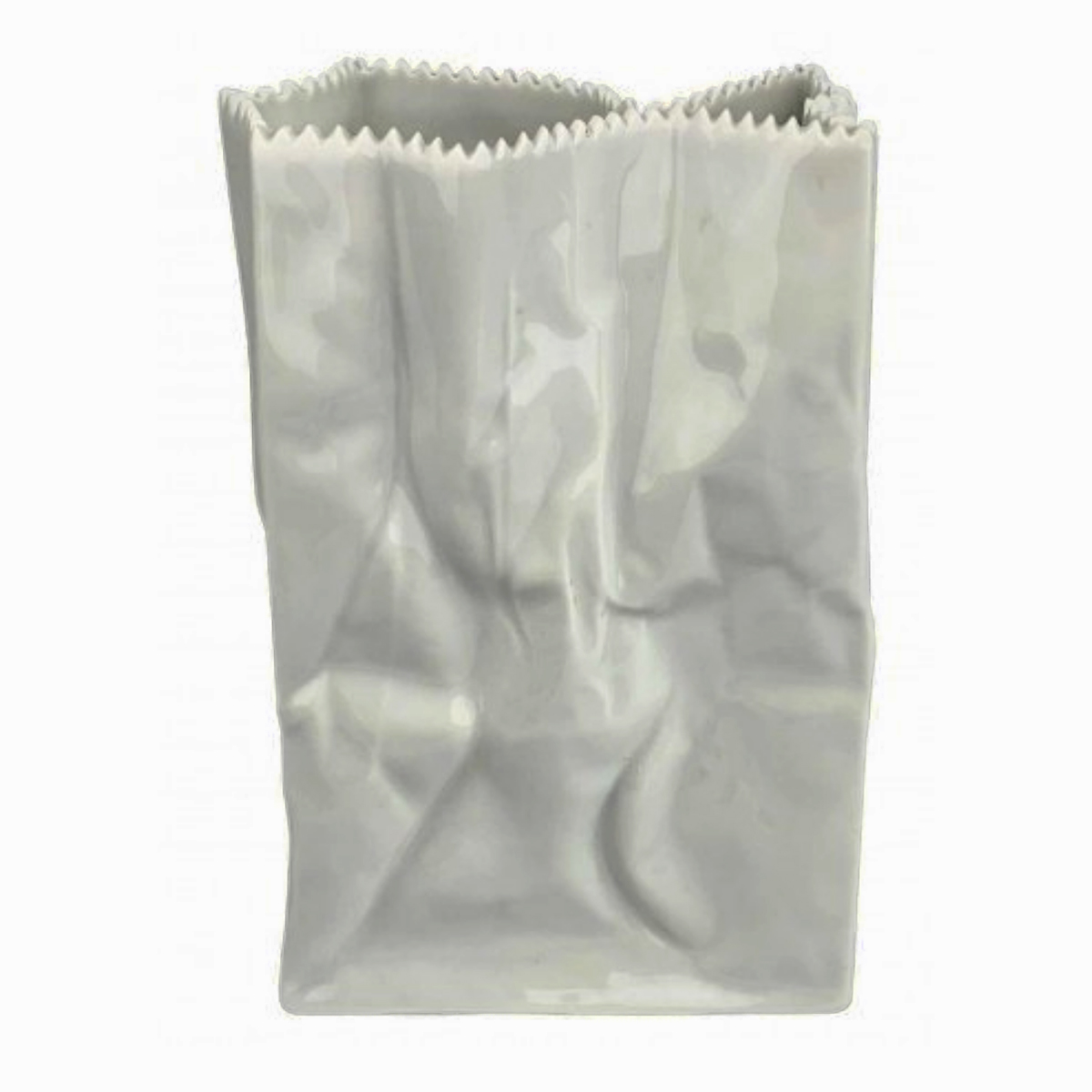experiment page
#443e44 dark cool grey, cccccc = grey grey lavender #d09fcc
 An online exhibition curated by students of the Spring 2020 Art History Museum Object class
An online exhibition curated by students of the Spring 2020 Art History Museum Object class
Contemporary art is a blend of styles and textures, and generally clashes with our traditional conceptions of what art is supposed to be. Our exhibit showcases just that: the artwork moves through time and space in an atypical manner. The freeform mode of art that we have chosen to display is mirrored in the freeform approach we have chosen to use in the design of the gallery. The pieces span roughly a century, though concentrated in the second half of the 20th century. Eleven artists are represented, including former students and faculty members of the university. The pieces range from small to large, and are fashioned from a diverse selection of materials, including leather, wood, rope, and rubber. Off-Kilter is an exploration of how these separate elements work as a whole.
Off-kilter |
||||
| /ôf-ˈkil·ter/ adjective 1. Away from the expected or desirable condition; off balance, awry. 2. Uneven, unbalanced, distorted; (also) unconventional, offbeat, eccentric. |
“Off-kilter” is defined as being away from the expected or desirable condition. Synonyms include off balance, awry, uneven, distorted, unconventional, offbeat, or eccentric. We have used this word as the title of our show, and as a guiding principle in the curatorial approach and selection of objects. All the objects in the exhibition reflect this theme of off-kilter-ness in their unique, and strikingly distinct colors, forms and textures. We hope to guide our visitors’ eyes to what makes each piece unique and wonderfully wacky, and in doing so learn about the diversity of contemporary modern sculpture.
|
|||
Contemporary Art |
||||
|
“Contemporary” describes modern ideas of fashion or design. As an art movement, it pushes the boundaries of what can be defined as art; all manner of materials, methods, concepts, and designs are used to challenge this dynamic definition. It began in the 60s and 70s, following post-modernism and continuing to the present; it is a cultural dialogue that frames larger concepts in a world that is always growing and becoming more globally, culturally, and technologically advanced.
|
/kənˈtempəˌrerē ärt/ adjective + noun 1. Contemporary art broadly includes work produced during the late 20th and early 21st centuries. It generally defines art produced after the Modern Art movement to the present day. |
|||
Texture |
Texture refers to the quality of a surface as revealed by light, how it feels, or how it appears to feel. In a two dimensional piece, texture follows the same line, referring to its “feel”, but is usually limited to a perceived texture rather than a physical one. As a fundamental element of art, texture is commonly used to evoke a sense of emotion, like discomfort, familiarity, or satisfaction. For three dimensional pieces, like those in our show, texture is initially implied based on the material used by the artist. However, as seen in our exhibition, some objects attempt multiple textures by adding elements or affecting the base material. How the artist plays with texture within their piece determines the physical or emotional response from the viewer. |
||||||||
|
Form describes an object’s shape and structure, either in two dimensions or in three. Further, when discussing an object, form is the way the object appears, as well as the space it takes in an exhibition. We talk about form as a presence, in height, width, depth, and “mass”. However, form can also denote an object’s physical elements, its material, or its role as a medium. Within our own exhibit, Off- Kilter, form is seen in-the-round, while the objects themselves encompass both geometric and organic shapes. We believe the objects within our exhibition are unconventional and modern, some touching on the intrigue of texture, while others exist to promote form alone.
|
Form |
||||||||
Texture+Form |
|||
|
Form describes an object’s shape and structure, either in two dimensions or in three. Further, when discussing an object, form is the way the object appears, as well as the space it takes in an exhibition. We talk about form as a presence, in height, width, depth, and “mass”. However, form can also denote an object’s physical elements, its material, or its role as a medium. Within our own exhibit, Off- Kilter, form is seen in-the-round, while the objects themselves encompass both geometric and organic shapes. We believe the objects within our exhibition are unconventional and modern, some touching on the intrigue of texture, while others exist to promote form alone.
|
Form |
||||||||
Texture |
Texture refers to the quality of a surface as revealed by light, how it feels, or how it appears to feel. In a two dimensional piece, texture follows the same line, referring to its “feel”, but is usually limited to a perceived texture rather than a physical one. As a fundamental element of art, texture is commonly used to evoke a sense of emotion, like discomfort, familiarity, or satisfaction. For three dimensional pieces, like those in our show, texture is initially implied based on the material used by the artist. However, as seen in our exhibition, some objects attempt multiple textures by adding elements or affecting the base material. How the artist plays with texture within their piece determines the physical or emotional response from the viewer.
|
||||||||
old stuff:
– Installation in Progress –
Opening April 24
Texture |
||||||||||
Form |
|||||||||
Form |
||||||
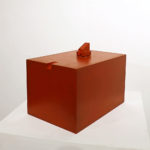 |
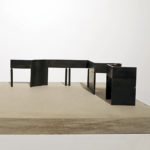 |
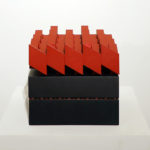 |
 |
|||
In spite of the global pandemic that interrupted and dramatically altered the spring of 2020, seniors in the Department of Art History continued to excel in their coursework and extracurricular activities, and plan for bright futures. This year’s graduating class curated online exhibitions, completed impressive independent research projects and museum internships, and participated in campus-wide service organizations. Their student organization activities transformed our community, bringing together faculty and students at all levels for scholarly conversations, social gatherings, magazine publications, and production of promotional materials.
In place of the awards ceremonies, exhibition openings, and graduation events we would like to have hosted for these outstanding graduates, we have prepared this small tribute to their excellence.
| Gabrielle Abbosh completed a minor in Religion in addition to her Bachelor of Arts degree in Art History. Throughout her years at Florida State, Gabby expanded her appreciation for contemporary photography, particularly in Dr. Adam Jolles’s History of Photography seminar. She writes, “That was the first time I felt a really deep connection to a particular area within art history. It made me confident that photography is what I want to study in the future.” In addition to her work as UAHA Treasurer, Gabby also served as an intern at the FSU Museum of Fine Arts, where she studied curatorial strategies, wrote blog posts, and collaborated with other interns. Following graduation, she plans to begin graduate school in the fall of 2021. | |
| Ivy Bealyer completed a Museum Studies minor alongside her Art History curriculum. As Co-Vice President of UAHA, Ivy organized events with the FSU Print Club and designed promotional materials for the department website and social media. Throughout her undergraduate career at Florida State, Ivy held internship positions at 621 Gallery and the Williams Johnston Building Gallery and was a member of the College Leadership Council for the College of Fine Arts and Ukirk. With an interest in contemporary art and Abstract Expressionism, she will enter the Art History Museum and Cultural Heritage Studies graduate program in fall 2020. | |
| Cassie Bednar completed her BA with a double major in Art History and Marketing. She participated in several student leadership positions and organizations, including Alpha Phi, the College of Business Student Leadership Council, American Marketing Association, Garnet and Gold Key, and the Garnet and Gold Scholar Society. She shares her favorite memory as an Art History student: “After studying abroad in Florence, I took an Italian Renaissance class. It was amazing to learn about all of the works I had just seen in person. It made me even more excited about the major!” Following graduation, Cassie plans to move to Chicago and work in the marketing industry. | |
| Rebecca Clendinen earned a dual Bachelor of Arts degree in Art History and Italian and French Studies. In addition to her degree coursework, she took classes in the Department of Chemistry & Biochemistry to further her knowledge of art conservation. One of Rebecca’s favorite memories as an Art History student was experiencing the camaraderie developed between the women in Dr. Lauren Weingarden’s Sex and the City seminar. Following graduation, she will prepare to apply for the New York University’s Dual Master’s Program in Conservation of Historic and Artistic Works and the History of Art and Archaeology beginning in Fall 2021. | |
| Karis De Gannes provided a passionate voice in her lecture and seminar courses during her time at FSU. With a love for medieval art and material from the colonial period, Karis’s favorite class was Dr. Paul Neill’s Spanish Colonial Art, which explored the issues and truths of colonialism and its impacts on material artifacts. After graduation, Karis plans to pursue her dream of educating others about the history of art by seeking opportunities in galleries, museums, and academic institutions on the West Coast. She writes that she “will always fondly remember my FSU Art History professors, who genuinely valued the excitement of young art historians.” | |
| Stephanie Fischer (Honors in the Major) completed a minor in Communications in conjunction with her BA in Art History. She expanded her education through internships at 621 Gallery and at the Strozier Library Office of Digital Research and Scholarship, where she curated a digital exhibition and researched the permanent collection statistics of FSU Museum of Fine Arts. As the Co-Vice President of UAHA, Stephanie worked to build community within the Department of Art History, planning social and academic events where students and professors could gather casually. She completed her honors thesis, The Breadth of Vincent van Gogh: The Analysis of Artistic Motivation, under the direction of Dr. Lauren Weingarden. Stephanie will continue her education in New York University’s Institute of Fine Arts Master’s program in the History of Art and Archeology. | |
| Paris Gilstrap (Honors in the Major) completed a dual degree in Art History and International Affairs with a focus on Political Science, and a minor in Museum Studies. In addition to multiple internships, Paris served as President of UAHA, co-chair of the College Leadership Council for the College of Fine Arts, and member of Empowering Women Globally, the Garnet and Gold Scholars Society, and the Honors Program. Paris describes her favorite class as an Art History student: “Museum Object with Dr. Kristin Dowell really challenged us to incorporate decolonial practices in developing the exhibition Interwoven: An Exploration of Native American Basketry.” Beginning in fall 2020, Paris will pursue the MA in Art History at Florida State University. She hopes to further the research she conducted for her undergraduate honors thesis, Migrant Activism in Street Art: A Study of Contemporary Public Practice in Paris, written under the direction of Dr. Tenley Bick. | |
| Emily Jensen describes her favorite memory as an FSU Art History student, “traveling through Europe in the summer visiting all of the art I had studied during the fall and spring semesters.” As a member of Strike Magazine, a student-run fashion publication, Emily expanded her interest in art into other aspects of her life. In fall 2020, she will attend graduate school at Sotheby’s Institute of Art for a Master of Arts in Art Business, and she plans to eventually pursue a law degree. | |
| Sara Kuba completed a Museum Studies minor along with her BA in Art History. With interest in the Japanese Edo period, Sara provided diverse topics of discussion in seminar courses such as Dr. Lauren Weingarden’s Sex and the City. Inspired by her coursework in Dr. Kristin Dowell’s Decolonizing Museums, Sara will begin to pursue her MA in Museum and Cultural Heritage Studies in the Department of Art History at FSU beginning fall 2020. | |
| Kelsey Litchfield completed a Communications minor in conjunction with her BA in Art History. In her studies, Kelsey was drawn to the Baroque period inspired by Dr. Robert Neuman’s Baroque and Eighteenth-Century Art lecture classes. Apart from her academic studies, Kelsey participated in the Young Democrats of Florida State and the Undergraduate Art History Association, and interned at 621 Gallery. While holding on to the unbreakable bonds she formed with her classmates, she will begin to enter the workforce following graduation. | |
| Sahara Lyon (Honors in the Major) served during her undergraduate years as the co-president of Empowering Women Globally, treasurer of Forensics Speech and Debate, and an intern at the FSU Museum of Fine Arts. As an Art History and Museum Studies student, Sahara describes her favorite class, Dr. Tenley Bick’s Contemporary Art of Africa and its Diasporas: “I learned so much in [Dr. Bick’s] class every day. It was also a great group of students who participated in every lecture, but that’s just how art history students at FSU are!” She expanded her study with Dr. Bick as her directing professor on her Honors thesis, Viva la Mujer: International Leftist Politics and Pan-Hispanism in the Work of Alice Neel. In the fall of 2020 Sahara will pursue the MA degree in Art History at Florida State University. | |
| Allison Marino (Honors in the Major) graduates from Florida State with a double major in Art History and Media Communication Studies. With interest in Early Modern Northern European prints, Marino combined her studies of both Art History and Communications and completed her Honors Thesis, Printing Circularity in Early Modern Nuremberg, under the direction of Dr. Stephanie Leitch. She describes her favorite course in the Department of Art History, Dr. Lauren Weingarden’s Sex and the City undergraduate seminar: “I and seven other young female scholars met once a week to talk about art and life. The course material was great (of course, it’s Dr. Weingarden!) and the people were greater!” Alison was a member of Phi Beta Kappa Honor Society, Garnet and Gold Scholar Society, and Honors Student Association. She will begin graduate study in Art History at The University of Texas at Austin in fall 2020. | |
| Casey Vasquez developed a passion for conceptual art and curatorial activism in her studies at FSU. While serving as an intern at 621 Gallery, Vasquez aided in installation and curation of monthly exhibitions, planned gallery events, and engaged with local artists. Her role as the assistant to the editor in chief and member of the Hispanic Honor Society expanded her academic study outside the classroom. She describes her experience in her favorite class, Sex and the City taught by Dr. Lauren Weingarden: “I admire Dr. Weingarden’s knowledge and respect for the arts; she truly made this class come to life. We spent one day a week discussing topics of feminism, empowerment, and art; I mean truly what else could a girl want? This seminar class was unlike any class I’ve ever had before and I loved every second of it.” Following graduation, Vasquez plans to move to Spain where she will teach English. |



